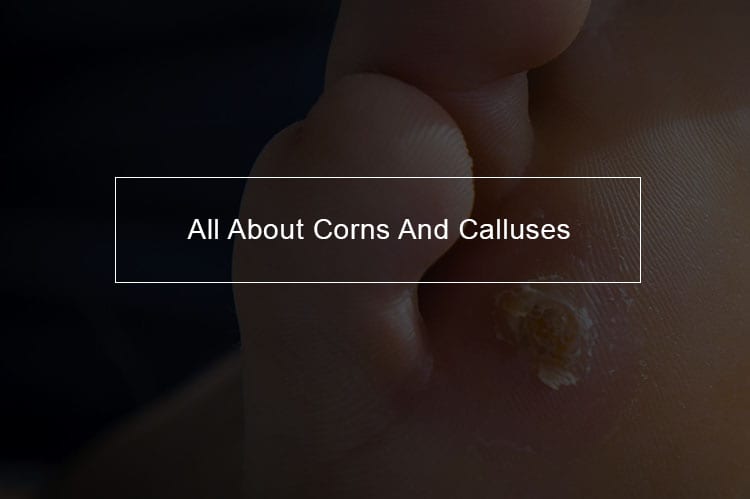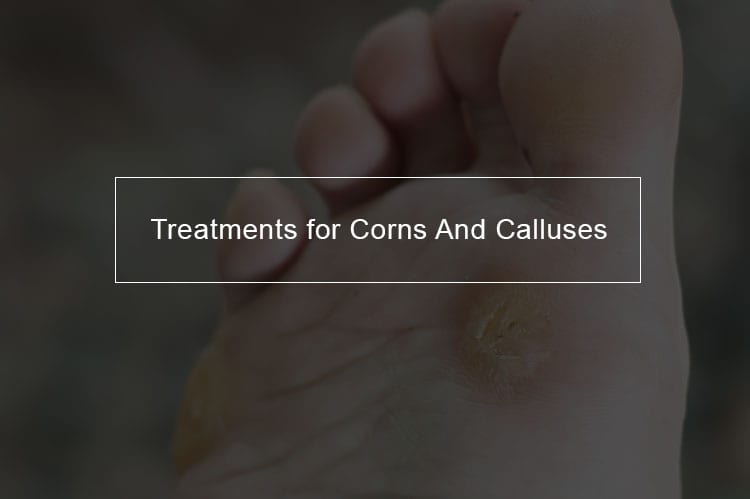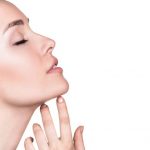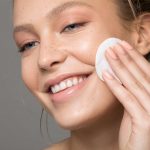
Corns and calluses are usually used interchangeably. However, the two do not refer to the same things. There are clear distinctions between a corn and a callus. Calluses are areas of skin that become toughened and thick because of friction, irritation, or pressure while corns are a form of calluses, made from dead skin. They usually form on a smooth, hairless skin surface, specifically on the side of the toes or the top.
Corns and calluses are hard and painful skin areas. The usually form around the feet dues to friction or pressure. These areas are as a result of the skin trying to protect a hidden area from injury, rubbing, or pressure. Corns and calluses cause irritation, but they are not dangerous. This condition is more common among individuals who wear uncomfortable shoes, who have sweaty feet, and those who stand or walk for a very long time.Corns and calluses are more common in ladies than in men.
Facts about corns and calluses
Below are quick facts about corns and calluses. There are discussed in details in the article.
- Corns have a distinct, frequently hard, center, which may be surrounded by swollen, inflamed skin.
- Corns can be unpleasant when pressed, but calluses are not usually painful.
- Calluses are generally larger than corns, and they differ in shape, while corns tend to be smaller sized, distinct, and round.
- Calluses usually form on the part of the body that bears weight such as the soles of the feet, on the knees, and also on the palms of the hands. Corns typically occur in non-weight-bearing parts of the skin.
- Over the counter, topical medicine or pumice stone can be used to deal with corns and calluses without visiting a doctor.
- Uncomfortable corns or calluses might require medical attention.
- Clothing and lifestyle changes can help prevent the condition.
What is the difference between corns and calluses?
Corns and calluses are usually used interchangeably. However, the two do not refer to the same things. There are clear distinctions between a corn and a callus.
What is a callus?
Calluses are areas of skin that become toughened and thick because of friction, irritation, or pressure. They often occur on the feet, but they can happen on the hands, knees, or elbows. Calluses are pale or yellowish and feel bumpy to the touch. However, calluses are not as sensitive as the rest of your skin. This is because they tend to be very thick. Calluses are frequently bigger and wider than corns, with less defined edges. They frequently appear where the skin often rubs against something, such as a bone, footwear, or the ground. They typically form over the bony areas where a lot of weight is applied when standing or walking. These areas are under the toes or the knees.
What is a corn?
Corns are a form of calluses, made from dead skin. They usually form on a smooth, hairless skin surface, specifically on the side of the toes or the top. They are generally small and circular, with a plainly defined center that can be soft or hard.
Hard corns
Hard corns are small and form in places where calluses form; in the bony or tough areas of the foot.
Soft corns
Soft corns tend to be whitish, with a rubbery texture. They more commonly occur in areas with sweaty and wet skin such as in between the toes.
Calluses and corns are not typically hazardous, but often they may lead to infections or ulcers of the skin, particularly amongst individuals with diabetes and those with poor blood circulation in the feet.
Signs and symptoms of corns and calluses
Corns and calluses can be very uncomfortable as if you are walking on stones. The following signs or symptoms might help you know whether you have a corn or callus:
- a raised, hardened bump
- a rough and thick area of skin
- pain or inflammation under the skin
- skin that is flaky and dry
If a corn or callus ends up being extremely inflamed or agonizing, look for medication help. People with poor circulation, vulnerable skin, numbness on the feet or nerve problems must talk with their doctors before using home remedies to treat corns and calluses. People with peripheral arterial, peripheral neuropathy, and diabetes need to be especially careful.
What causes corns and calluses?
Causes of corns and calluses
The following factors are connected to a greater occurrence of corns and calluses:
- anything that triggers friction or pressure on the skin
- shoes that are too loose, this causes friction
- shoes that are too tight or that are too high, this causes pressure
- not wearing socks
- wearing socks that don't fit
- walking without shoes
- a severely placed joint in a shoe that rubs against the skin
- walking and running for long distances a lot
- older age, dues to less fatty tissues that cushion the feet
Calluses typically appear on the feet, but friction and pressure can likewise trigger calluses on the hands. People who use hand tools like shovels or those who cycle a lot without gloves get them on the hand. Frequent kneeling or resting elbows on a table also leads to calluses.
Hammertoe, bunions, and other foot issues and deformities increase the threat of the condition. A bunion is a bony, unusual bump that develops at the base of the huge toe. A hammertoe is when a toe ends up being snuggled like a claw.
How to know if you have a callus or a corn?
To know if the hard patch of skin is a wart or a callus, your physician will scrape off some affected skin. When the skin is scraped off, a callus will only reveal more dead skin. Warts, on the other hand, bleed in a certain pattern.
Warts are viral and require specific treatment. The majority of corns and calluses are taken care of in different ways, including; trimming the callus, changing shoes and some surgical treatment.
What are the treatments for corns and calluses?

Reducing friction and pressure to prevent corns and calluses
The majority of corns and calluses slowly vanish when the pressure or friction stops. Your doctor can also reduce the thickness of the callus by shaving it off. The pressure of a corn can be drastically reduced by strategically placing moleskin pads.
Salicylic-acid for corns and calluses
Many foot physicians advice against using non-prescription salicylic-acid to remedy corns. The acid can create a chemical skin burn around the corn and cause infections and holes through the skin (ulcers) ulcers in patients with diabetes, numbness in the feet, and poor circulation.
Oral antibiotics for corns and calluses
Oral antibiotics generally clear up contaminated corns, however pus may have to be drained.
Moisturizing creams for corns and calluses
Moisturizing creams soften the skin and eliminate split calluses. Apply these creams to the calluses and cover the location overnight with a plastic bag or a sock; this has to be specifically advised by your doctor. Then carefully rub off as much of the callus as you can with a coarse towel or soft brush. Alternatively, use a pumice stone to rub off the dead skin from a callus after a bath and then apply moisturizing cream.
There are likewise stronger creams that might be more reliable. These creams have urea and should only be used if your doctor recommends. Hydrocortisone creams may be useless for calluses as it only helps with rashes and itching.
Surgical treatment for corns and calluses
You can consider surgical treatment to eliminate a plantar callus. However, there are no assurances that the callus won't return. A conservative method is the best first treatment choice. If your corn is caused by abnormal walking motion, hip rotation, or foot structure orthopedic shoe inserts or surgery to fix foot defects may remedy the issue. This has to be determined by a podiatrist or orthopedist.
Home treatment for corns and calluses
A lot of people treat corns and calluses at home, using over-the-counter medications. Here is how:
- Soak the corn or callus for 10 minutes in warm water, then scrape with a pumice stone.
- Utilizing moisturizer every day on the feet. Products with urea, salicylic acid, or ammonium lactate soften the dry skin.
- Reduce running, walking, or using hand tools.
- Wear shoes and socks that fit you properly
- Silicone wedges between the toes may be useful to lower pressure on a corn.
- Orthotics are personalized padded shoe inserts which might help individuals with an underlying foot defect.
When to see a medical professional concerning corns and calluses
If you have diabetes, circulatory issues, fragile skin, or if the corn or callus is really painful, then it is best to consult a podiatrist or a doctor who is specialized in foot care. The doctor will analyze the feet, ask the individual about their lifestyle, and they might inspect their shoes. A podiatric might get rid of a few of the hard skin that surrounds the corn to remove the center.
After trimming the skin, a patch with salicylic acid can be applied. The patch needs to be changed as recommended. A file or pumice stone is used to rub away dead skin before using the patch. If there is an infection or a danger of infection, the doctor might prescribe an antibiotic ointment. Red and inflamed skin around the corn or callus is a sign of infection. If the medical professional thinks there might be a hidden bone structure problem, they may refer the patient for an x-ray, and possibly surgical treatment.
Caution when using home treatments for corns and calluses
When treating corns and calluses in your home, it is necessary not to eliminate too much skin, as this can result in discomfort and infection. Older people and those with diabetes need to not scrape, or cut at home, as this can cause infections that are difficult to cure. It might lead to ulcers on the skin. They must also get the go-ahead from their doctor before using salicylic acid, as this, too, can trigger ulcers. Any cutting or paring of skin is best done by a pediatric or an experienced doctor. Corns and calluses typically reoccur, and therefore, repeated remedy is required.
How do I prevent corns and calluses?
Prevention of corns and calluses
The following procedures might help in reducing the risk of developing corns and calluses:
- Wash the feet with soap and water every night.
- Apply moisturizing foot cream after cleaning and drying them well. Do not use a body cream.
- Wear well-fitting shoes and socks that do not rub the skin.
- When cutting the toenails, cut straight throughout, and not down at angle
- Remove dead skin regularly with a pumice stone or foot file frequently
- Use clean socks every day
- Usage baby powder to avoid sweating
- Take care of any foot inflammation as soon as possible
- Have a routine check-up with a foot expert
- Protect the hands when using tools
With treatment, corns and calluses can be eliminated. However, they may return if you do not change your footwear or lifestyle.




